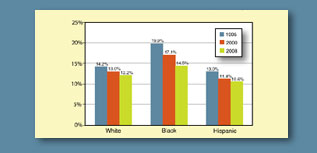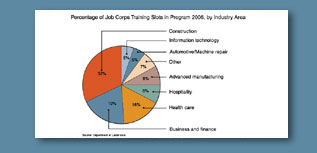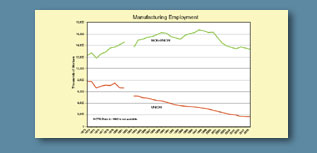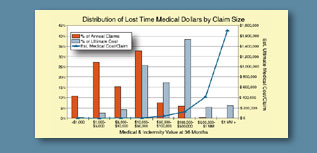 |
 |
| |
 |
 |
| |
| The long slide in private sector union membership is well documented.
The decline began in 1953, when 35.7% of the private sector work force
was organized. Last year, this figure stood at 7.6%, while public sector
membership has held steady around 35-37% since the mid-1980s. As if this
downward trend was not alarming enough to union leaders, a deeper dive into union member demographics paints an even grimmer picture of the future of organized labor. |
|
 |
|
|
|
| |
 |
 |
| |
| Even in this bleak economic recession, employers still scramble to find qualified workers for certain positions. |
|
 |
|
|
| |
 |
 |
| |
| Top labor leaders continue to hype the perceived benefits of the widely publicized, union-strengthening Employee Free Choice Act (EFCA), aka “Card Check, ” that the Senate failed to pass in the 110th congressional session. |
|
 |
|
|
|
| |
 |
 |
| |
| Prescription drugs account for over 19% of the medical cost of workers’ compensation claims, the single largest cost item in a recent study of claims published by the National Council on Compensation Insurance. The analysis evaluated claims from 2001-2003 at 36 months of maturity, ranging from under $1,000 to more than $1 million for medical and indemnity combined. |
|
 |
|
|
|
| |
 |
 |
| |
| Well over 90% of U.S. exports are manufactured products. After several years of improvement in the cost structure of U.S. manufacturing, domestic producers are bracing for significant erosion in U.S. competitiveness due to cost increases largely outside their control. Not surprisingly, the federal government is a major influence on these external costs, either directly or indirectly. |
|
 |
|
|
|
| |
 |
 |
| |
| The official rate of unemployment recognized by the U.S. Department of Labor is on course to reach double digits by Summer 2009. This comes as no surprise, with corporate giants like General Motors filing for bankruptcy and cutting tens of thousands of jobs. However, an alternative, more comprehensive measure of unemployment suggests the current situation is much worse than the commonly reported numbers indicate. |
|
 |
|
|
|
| |
 |
 |
|
 |